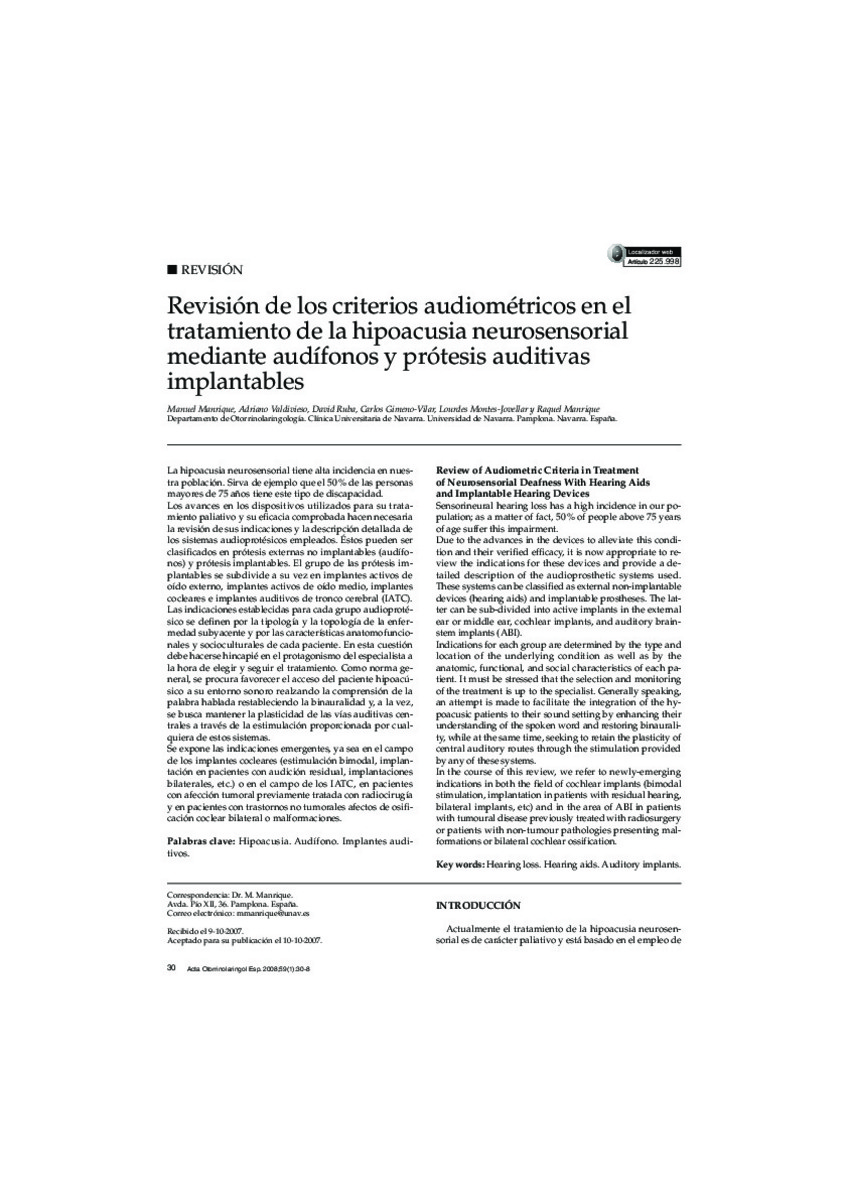Revisión de los criterios audiométricos en el tratamiento de la hipoacusia neurosensorial mediante audífonos y prótesis auditivas implantables
Otros títulos :
Review of audiometric criteria in treatment of neurosensorial deafness with hearing aids and implantable hearing devices
Palabras clave :
Hearing loss
Hearing aids
Auditory implants
Fecha de publicación :
2008
Cita:
Manrique M, Valdivieso A, Ruba D, Gimeno-Vilar C, Montes-Jovellar L, Manrique R. Revisión de los criterios audiométricos en el tratamiento de la hipoacusia neurosensorial mediante audífonos y prótesis auditivas implantables. Acta Otorrinolaringol Esp 2008 Jan;59(1):30-38
Aparece en las colecciones:
Estadísticas e impacto
0 citas en

0 citas en

Los ítems de Dadun están protegidos por copyright, con todos los derechos reservados, a menos que se indique lo contrario.








